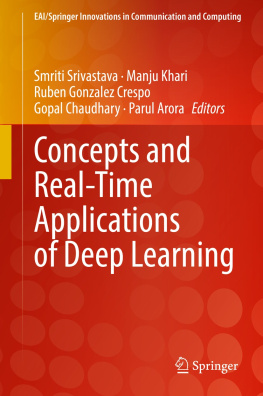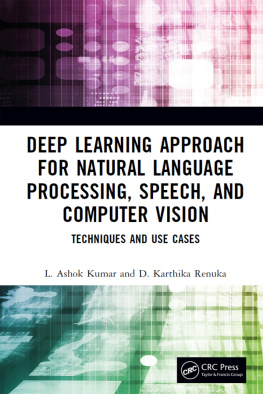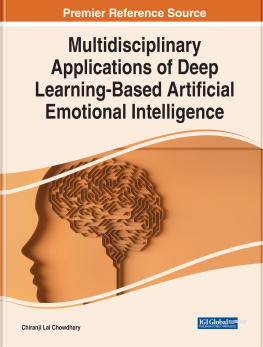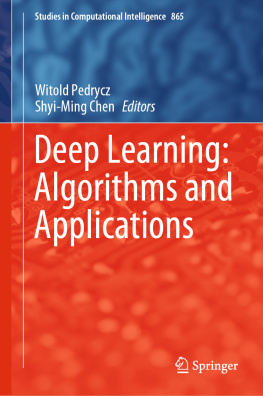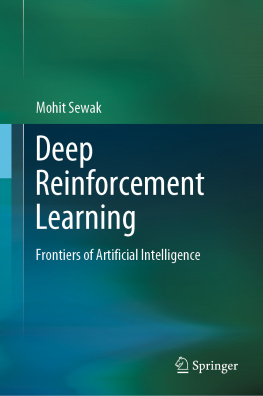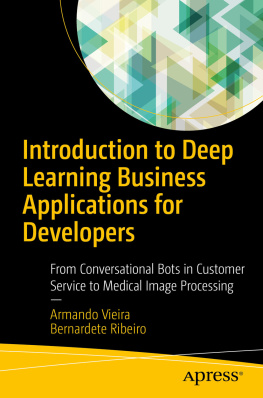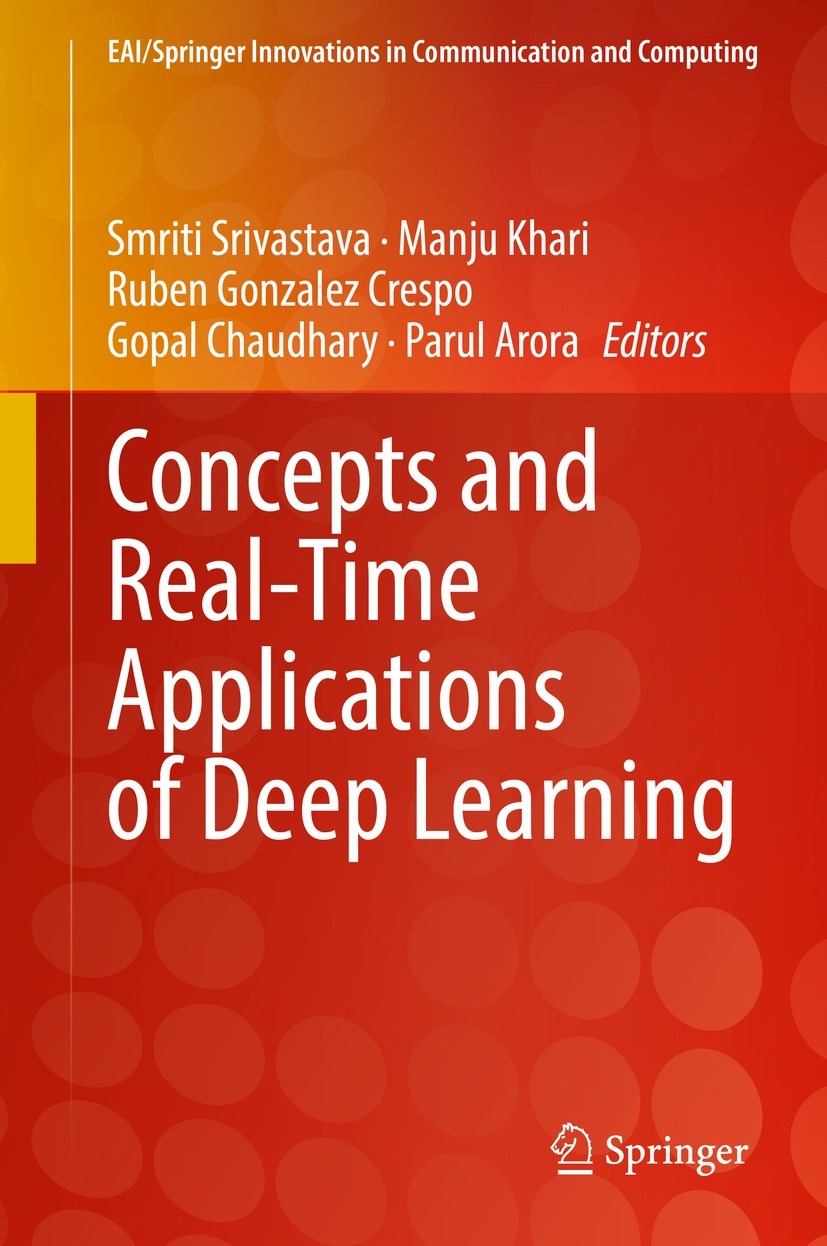EAI/Springer Innovations in Communication and Computing
Series Editor
Imrich Chlamtac
European Alliance for Innovation, Ghent, Belgium
Editors Note
The impact of information technologies is creating a new world yet not fully understood. The extent and speed of economic, life style and social changes already perceived in everyday life is hard to estimate without understanding the technological driving forces behind it. This series presents contributed volumes featuring the latest research and development in the various information engineering technologies that play a key role in this process.
The range of topics, focusing primarily on communications and computing engineering include, but are not limited to, wireless networks; mobile communication; design and learning; gaming; interaction; e-health and pervasive healthcare; energy management; smart grids; internet of things; cognitive radio networks; computation; cloud computing; ubiquitous connectivity, and in mode general smart living, smart cities, Internet of Things and more. The series publishes a combination of expanded papers selected from hosted and sponsored European Alliance for Innovation (EAI) conferences that present cutting edge, global research as well as provide new perspectives on traditional related engineering fields. This content, complemented with open calls for contribution of book titles and individual chapters, together maintain Springers and EAIs high standards of academic excellence. The audience for the books consists of researchers, industry professionals, advanced level students as well as practitioners in related fields of activity include information and communication specialists, security experts, economists, urban planners, doctors, and in general representatives in all those walks of life affected ad contributing to the information revolution.
Indexing: This series is indexed in Scopus, Ei Compendex, and zbMATH.
About EAI
EAI is a grassroots member organization initiated through cooperation between businesses, public, private and government organizations to address the global challenges of Europes future competitiveness and link the European Research community with its counterparts around the globe. EAI reaches out to hundreds of thousands of individual subscribers on all continents and collaborates with an institutional member base including Fortune 500 companies, government organizations, and educational institutions, provide a free research and innovation platform.
Through its open free membership model EAI promotes a new research and innovation culture based on collaboration, connectivity and recognition of excellence by community.
More information about this series at http://www.springer.com/series/15427
Editors
Smriti Srivastava , Manju Khari , Ruben Gonzalez Crespo , Gopal Chaudhary and Parul Arora
Concepts and Real-Time Applications of Deep Learning
1st ed. 2021

Logo of the publisher
Editors
Smriti Srivastava
Instrumentation and Control Engineering, Netaji Subhas University of Technology, New Delhi, Delhi, India
Manju Khari
School of Computer and Systems Sciences, Jawaharlal Nehru University, New Delhi, Delhi, India
Ruben Gonzalez Crespo
Department of Computer Science and Technology, Universidad Internacional de La Rioja, Logroo, La Rioja, Spain
Gopal Chaudhary
Department of Electronics and Communication Engineering, Bharati Vidyapeeths College of Engineering, New Delhi, Delhi, India
Parul Arora
Department of Electronics and Communication Engineering, Jaypee Institute of Information Technology, Noida, India
ISSN 2522-8595 e-ISSN 2522-8609
EAI/Springer Innovations in Communication and Computing
ISBN 978-3-030-76166-0 e-ISBN 978-3-030-76167-7
https://doi.org/10.1007/978-3-030-76167-7
The Editor(s) (if applicable) and The Author(s), under exclusive license to Springer Nature Switzerland AG 2021
This work is subject to copyright. All rights are solely and exclusively licensed by the Publisher, whether the whole or part of the material is concerned, specifically the rights of translation, reprinting, reuse of illustrations, recitation, broadcasting, reproduction on microfilms or in any other physical way, and transmission or information storage and retrieval, electronic adaptation, computer software, or by similar or dissimilar methodology now known or hereafter developed.
The use of general descriptive names, registered names, trademarks, service marks, etc. in this publication does not imply, even in the absence of a specific statement, that such names are exempt from the relevant protective laws and regulations and therefore free for general use.
The publisher, the authors and the editors are safe to assume that the advice and information in this book are believed to be true and accurate at the date of publication. Neither the publisher nor the authors or the editors give a warranty, expressed or implied, with respect to the material contained herein or for any errors or omissions that may have been made. The publisher remains neutral with regard to jurisdictional claims in published maps and institutional affiliations.
This Springer imprint is published by the registered company Springer Nature Switzerland AG
The registered company address is: Gewerbestrasse 11, 6330 Cham, Switzerland
Foreword
This book will provide the readers with a comprehensive and recent exposition on deep learning and its multidisciplinary applications. Deep learning is gaining much popularity due to its high accuracy with massive datasets and a wide array of applications. The soul of the computational ability of deep learning lies in its architecture. This book will focus on the advances of deep learning architectures and their libraries. Various artificial intelligence (AI) techniques based on deep learning architectures have exciting applications, such as natural language processing, biomedical, semantic knowledge, forecasting, and many more.
Many applications would benefit from this foundational work. Machine learning applied to regression is one such application, which has further applications in identifying missing data, statistical language modeling, and forecasting. Deep learning is changing the way we live, bringing theoretical concepts to practical applications such as surveillance, security, and medical diagnosis. This book will shed light on various applications that can benefit from deep learning such as pattern recognition, person re-identification in surveillance videos, action recognition in videos, image, and video captioning, to name a few. Deep Learning can be of great use to counter this surge in diagnostic requirements with its innovative healthcare systems and clinical diagnosis applications.
With the advancements in technology, security threats are continually increasing. With the increased usage of Internet and cloud services, reports of cyber-attacks, malware, and intrusion are also rising. This volume pitches path-breaking solutions to many such issues.
Speech is a powerful and compelling ability to communicate emotions, the attitude, or the behavior of a person, in a particular language. Deep learning-based architectures are used to classify speech fragments into various emotions. In a work described in this book, Mel frequency cepstral coefficients (MFCC) were extracted from the audio files. These features were given to a convolutional neural network (CNN). This CNN was then optimized to increase the model accuracy. This book also explores deep neural network (DNN) architectures and machine learning approaches to recognize emotions from speech signals involving multiple steps. Spectral as well as prosodic features were extracted from the pre-processed datasets.

